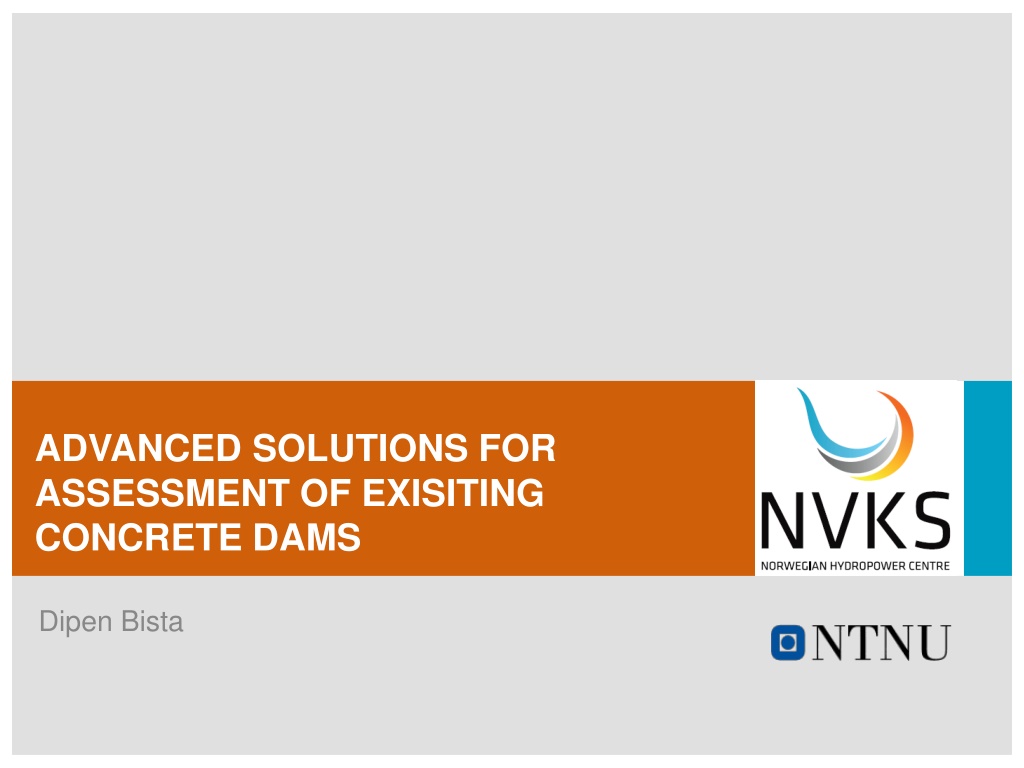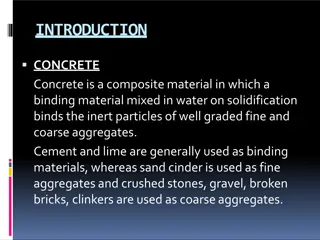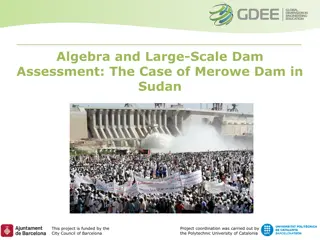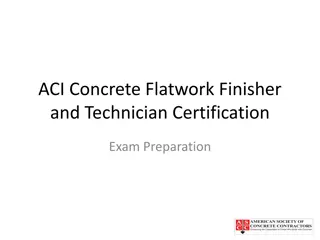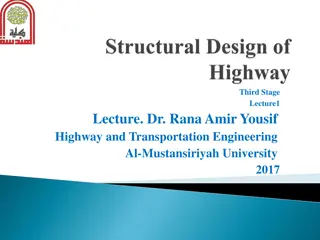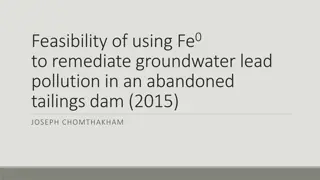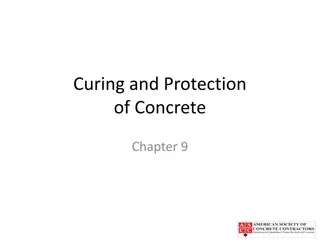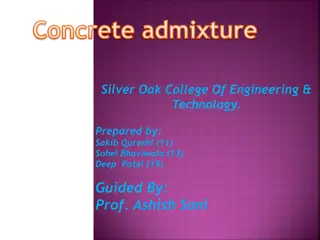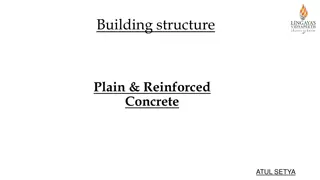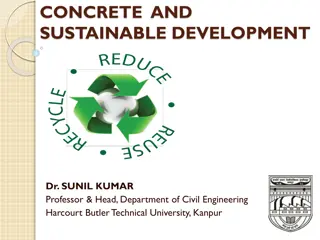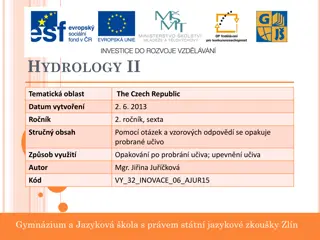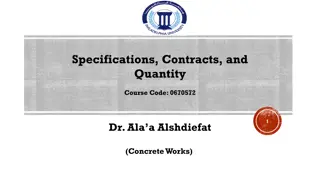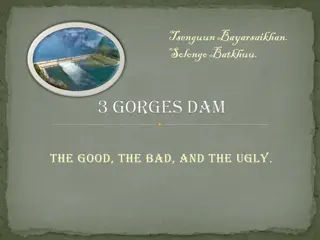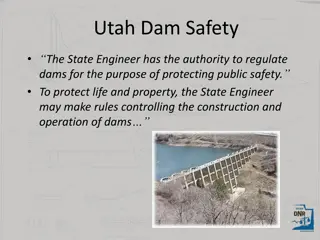Advanced Solutions for Concrete Dam Assessment
Utilizing advanced methods for the assessment of existing concrete dams is crucial for ensuring their stability and safety. This project focuses on analyzing the stability of small concrete dams in Norway built between 1950-1970, which may not meet current safety standards. The study involves evaluating factors like sliding resistance, shear friction, and uncertainties in failure planes to enhance dam stability. Research questions address cohesion estimation, rock bolt detection, material deformation effects, and force redistribution along dams. A case study on the IPTO Dam built in 1972 highlights the importance of rock bolts and inner reinforcements for stability despite not meeting current guidelines.
Download Presentation

Please find below an Image/Link to download the presentation.
The content on the website is provided AS IS for your information and personal use only. It may not be sold, licensed, or shared on other websites without obtaining consent from the author. Download presentation by click this link. If you encounter any issues during the download, it is possible that the publisher has removed the file from their server.
E N D
Presentation Transcript
ADVANCED SOLUTIONS FOR ASSESSMENT OF EXISITING CONCRETE DAMS Dipen Bista
About the project Project: Stable Dams Project Owner: NORUT Northern Research Institute Project Partners Gabriel Sas Fredrik Johansson Leif Lia
Concrete gravity dams Overstressing Sliding Failure Overturning Failure
Background Most of the small concrete dams (<15m) in Norway were built between 1950-1970 Safety factor requirement has been revised (for eg. 1-1.5 for sliding stability in design load) Dams are theoretically unsafe Safety calculation is based on simple calculation models
Background Analyisis Methods Sliding Resistance Shear Friction Limit Equilibrium ?? =?? + ? ??? ? = ? ?? =?? ? ? ? Different ways of defining factor of safety Results in different factor of safety Have different acceptance criteria Shear Friction method is used in Norway Shear strength commonly described by Mohr-Columb criteria
Current analysis method Uncertainities in The shape of potential failure plane Contribution for cohesion The current method donot incorporate Contribution from rock bolts Distribution of shear and normal stress ?? ????(1 ????.??? )+ ? tan(? + ) ? ?? =
Research Questions How can cohesion at a potential failure plane be reliably estimated, rock bolts detected and their condition evaluated? How do discontinuities in a potential failure plane s profile affect a dam s stability? How does the elastic deformation of the materials affect stability? How are forces redistributed along a dam, and how can their effects be accounted for when calculating its stability?
Ipto Dam test Built in 1972 Rock bolts and inner reinforcements contribute to stability (designed as cantilever) Not safe according to current NVE guidelines But shows no signs of overloading Aim of the test Existence of rock bolt The contact surface (friction plan) between the dam and the bed rock The bedrock integrity close to the dam
Ipto Dam test NDT tools used MIRA ultrasound 3D tomographer GPR system Reinforcement cover meters
Ipto Dam test Rock bolts were detected every 800 mm, No damage due to corrosion was observed (by NDT and drilling) No substantial discontinuity or air interface found between dam and bedrock Friction and Matedness Bedrock was found intact upto 2 m depth First step in preventing prevent unnecessary physical strengthening of dams
The Way Foreward Condition Assessment and Inspection Capacity and Resistance State of Art Demonestration Full scale test Investigate failure Select and Develop guidelines Revise methods history callibrate NDT for resistance developed Methods to tools assessment characterize Devise inspection Test feasibility of material properties method new methods and Methods of design tools and assessment NDT tools Statistical Methods
